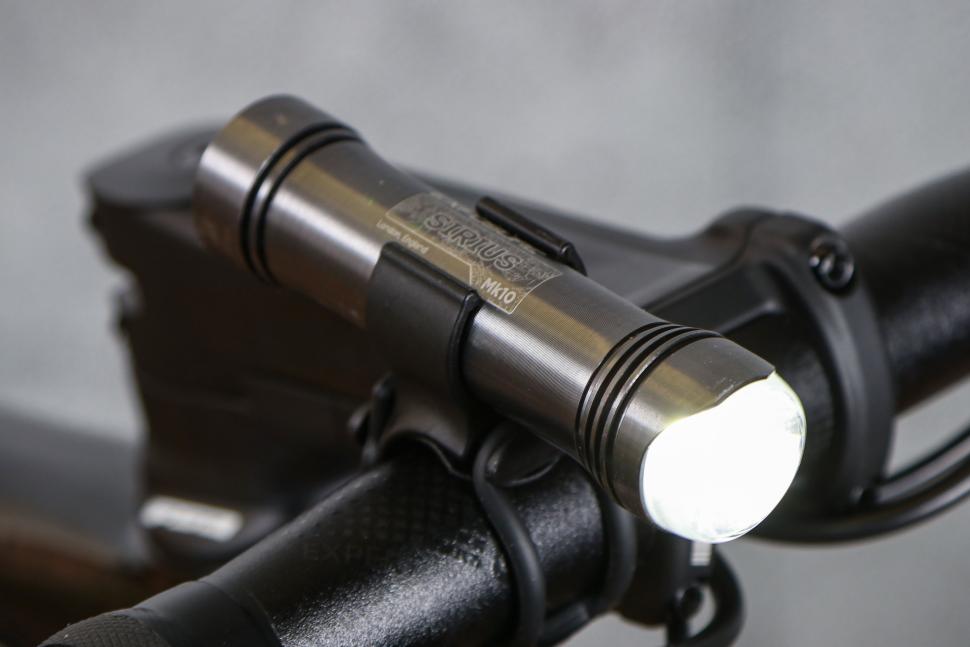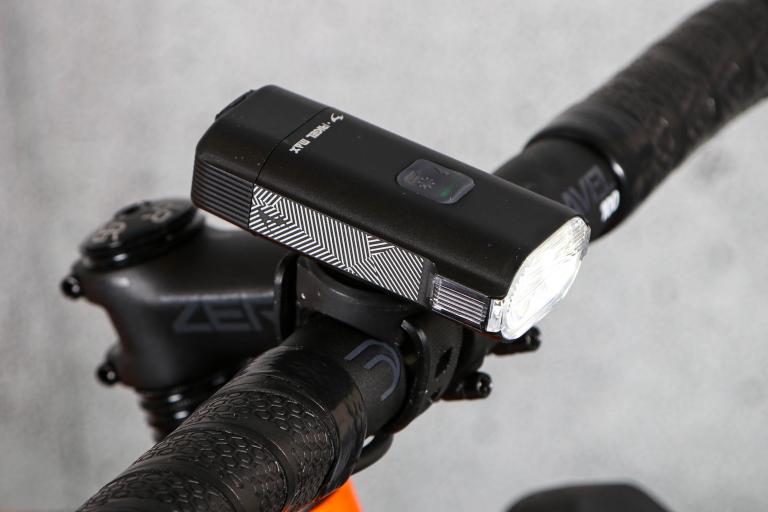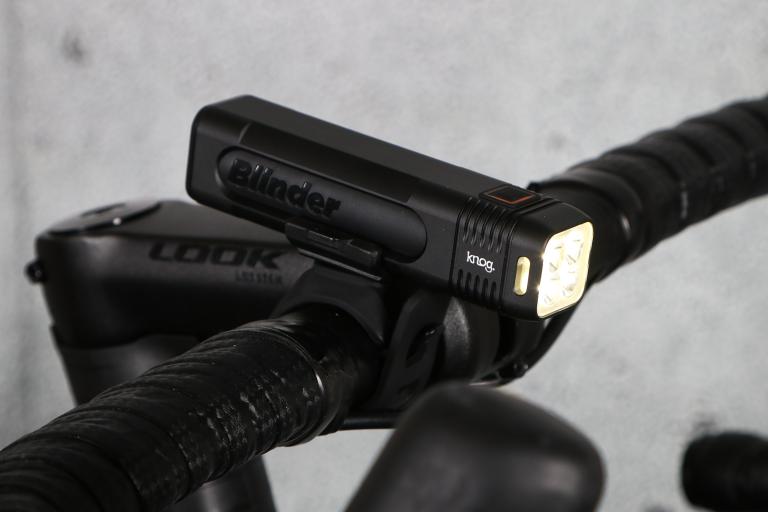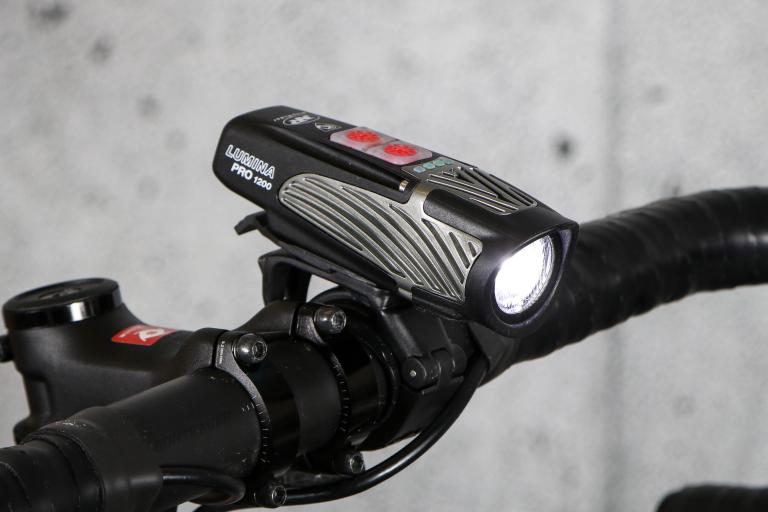- News
- Reviews
- Bikes
- Components
- Bar tape & grips
- Bottom brackets
- Brake & gear cables
- Brake & STI levers
- Brake pads & spares
- Brakes
- Cassettes & freewheels
- Chains
- Chainsets & chainrings
- Derailleurs - front
- Derailleurs - rear
- Forks
- Gear levers & shifters
- Groupsets
- Handlebars & extensions
- Headsets
- Hubs
- Inner tubes
- Pedals
- Quick releases & skewers
- Saddles
- Seatposts
- Stems
- Wheels
- Tyres
- Tubeless valves
- Accessories
- Accessories - misc
- Computer mounts
- Bags
- Bar ends
- Bike bags & cases
- Bottle cages
- Bottles
- Cameras
- Car racks
- Child seats
- Computers
- Glasses
- GPS units
- Helmets
- Lights - front
- Lights - rear
- Lights - sets
- Locks
- Mirrors
- Mudguards
- Racks
- Pumps & CO2 inflators
- Puncture kits
- Reflectives
- Smart watches
- Stands and racks
- Trailers
- Clothing
- Health, fitness and nutrition
- Tools and workshop
- Miscellaneous
- Buyers Guides
- Features
- Forum
- Recommends
- Podcast
review
 2022 Exposure Sirius Mk10 with DayBright - 3.jpg
2022 Exposure Sirius Mk10 with DayBright - 3.jpg£100.00
VERDICT:
More lumens added to the great build and easy-to-use design of previous models, without a price hike
Well made
Two-year warranty
Easy to operate
OMS & DayBright functions
No helmet mount included
Mount isn't aero bar compatible
Pricey in comparison to others
Weight:
85g
Contact:
At road.cc every product is thoroughly tested for as long as it takes to get a proper insight into how well it works. Our reviewers are experienced cyclists that we trust to be objective. While we strive to ensure that opinions expressed are backed up by facts, reviews are by their nature an informed opinion, not a definitive verdict. We don't intentionally try to break anything (except locks) but we do try to look for weak points in any design. The overall score is not just an average of the other scores: it reflects both a product's function and value – with value determined by how a product compares with items of similar spec, quality, and price.
What the road.cc scores meanGood scores are more common than bad, because fortunately good products are more common than bad.
- Exceptional
- Excellent
- Very Good
- Good
- Quite good
- Average
- Not so good
- Poor
- Bad
- Appalling
Exposure's Sirius MK10 Daybright isn't hugely different to its MK9 predecessor, but if a product works well, why change it? It's still easy to use, versatile for day and night riding in different light conditions, and even customisable – plus it's now a little brighter. It hasn't gone up in price, either, though it's not the cheapest; for more options, check out our guide to the best front bike lights.
The Sirius is part of Exposure's commuter range, and is claimed to be the ultimate 'be seen' light. The 3,500 mAh Li-Ion battery in the latest iteration gives out up to 900 lumens, and it definitely gets you seen – and also lets you see.
As with previous models, the MK10 is housed in a robust, slick-looking anodised 6063 aluminium casing. This is considerately shaped to avoid dazzling other road users while still offering side visibility.
While the beam pattern is noticeably torch-like (by comparison, something like Ravemen's LR1200 – full review to come – has a much wider spread) and far-reaching, side illumination is enough to prevent the sensation of riding into a tunnel.
It wouldn't be my first choice for evening training rides – lanes, tight corners and descents at speed need more peripheral vision than the Sirius offers, in my opinion – but I've been using it primarily for commuting, where it's been ideal: 80 per cent urban riding, 20 per cent unlit roads, no lanes. Its low, medium and high modes make it perfect for variable surroundings.
Easy to use
Some lights take time to get to grips with and their operation isn't memorable, but I didn't find this to be the case with the Sirius.
A stainless steel function button and a single LED are located on the back of the light. The LED uses a traffic light system, initially indicating the mode you are in, then (after three seconds) switching to battery level. A single press cycles through high, medium and low modes.
There's a DayBright function too (accessible from any of the three constant modes) with two different flashing patterns that will get you noticed during daylight hours.
Thanks to Exposure's Optimised Mode Selector (OMS), all of these settings are customisable; that's to say, you can extend run-times by reducing the lumens.
Exposure has etched the programmes and run-times on the casing. Although accessing the individual programmes isn't rocket science, it's explained here on YouTube.
I've never felt short-changed in terms of run-time or output – the Sirius covers a plethora of riding scenarios, and I found the run-times true to Exposure's claims.
Without listing all the modes and corresponding run-times, it's worth knowing the maximum output of 900 lumens will last 90 minutes, and Program 3 can give 36 hours of light in low mode.
The light uses Smart Port+ technology, which enables you to plug in other accessories such as remote switches or rear lights, and you can use it as a power bank to charge USB devices.
The port cover is a tad fiddly, but once in place offers a reassuringly snug fit. I've had the light out in some grim conditions and have had no issues with water ingress. It's rated to IP65.
I was charging it using a supplied mains cable and the Sirius was going from flat to full in well under three hours. Exposure claims a charge time of four hours on its website, which might be more accurate for USB charging.
Mounting
Having never actually tested an Exposure light before, but being aware of its reputation for high quality, I was slightly surprised by how basic looking the mount is. There was a small part of me concerned that the cradle might not grip the light in a couple of years, but it's done exactly what it needs to during the test period – the light hasn't budged once, and I've appreciated the option of mounting it above or below the bar.
Exposure has used this mount for over 10 years and, reassuringly, the light comes with a two-year warranty. If it's out of warranty, a new mount will currently set you back £14.
The mount isn't aero-bar compatible but fashioning something out of a silicone/rubber strip isn't out of the question, or you could fork out a fiver for Exposure's specific aero-compatible mount.
It's a bit disappointing that a helmet mount doesn't come in the MK10 bundle; the Sirius's weight makes it a perfect light to stick on your lid. A helmet mount will set you back another £22 on top of the inital £100 for the light.
Value
Whether the additional 50 lumens makes a huge difference over the MK9 is debatable, but extra lumens are always appreciated, and Exposure hasn't upped the price.
There are cheaper options out there, though. Giant's Recon HL1100 that Stu tested a couple of years ago will save you 20 quid while still offering some impressive smart technology to rival Exposure's OMS and 200 more lumens.
And considering you can get customisation and up to 1,500 lumens from Moon's Rigel Max (also tested by Stu, in 2021) for a tenner less than the Exposure, it's fair to say the Sirius is at the premium end of the market.
If you dial down Moon's lumens to 1,000, closer to the Sirius, you'll save a further £25 by buying the Pro Rigel, which Stu tested in 2021.
Conclusion
There's no getting around the fact that the Sirius is significantly more expensive than comparable lights, and don't forget the extra £22 if you want the helmet mount. However, there's also no getting around the fact that it's a quality item that performs brilliantly in a wide range of scenarios, and it has a two-year warranty.
Verdict
More lumens added to the great build and easy-to-use design of previous models, without a price hike
road.cc test report
Make and model: Exposure Sirius Mk10 DayBright
Size tested: 900 lumens
Tell us what the light is for, and who it's aimed at. What do the manufacturers say about it? How does that compare to your own feelings about it?
Exposure says, 'Sirius the ultimate 'to be seen' front light, now with the output increased to 900 lumens to light the road ahead in the dark nights. The Sirius hits the sweet spot for power to weight, housed in a CNC machined aluminium body that features 240° front and side illumination giving the flexibility to be used for the daily commute or longer rides.'
Tell us some more about the technical aspects of the light?
Exposure lists:
LEDs: 1 x White XPL2(W3)
IP Rating: IP65
Max Lumens: 900
Battery: 3,500 mAh Li-Ion
Runtime: 1.5 - 36 Hours
Charging Time: 4 Hours
Weight: 84g
Material: Anodised 6063 Aluminium
Length: 110mm
Head Diameter: 28mm
Rate the light for quality of construction:
10/10
Looks and feels solid.
Rate the light for design and ease of use. How simple was the light to use?
9/10
Run-times printed on the casing, indicator lights, and a single button... using all of this is a breeze.
Rate the light for the design and usability of the clamping system/s
7/10
Basic and not adaptable (to aerobars); you don't get a helmet mount with the light either.
Rate the light for waterproofing. How did it stand up to the elements?
8/10
I've had no issues with it in rainy conditions. It has an IP65 rating; the 6 relates to dust, the 5 to water, and means protection against low pressure water jets from any direction, as well as condensation and water spray, but don't submerge it.
Rate the light for battery life. How long did it last? How long did it take to recharge?
9/10
All as claimed and certainly sufficient for even a long commute. Recharging has been consistently under 3 hours.
Rate the light for performance:
8/10
Exposure markets this as a 'be seen light', and it performs brilliantly in this respect.
Rate the light for durability:
8/10
Rate the light for weight:
9/10
It's light for its output, and won't weigh down a helmet if you opt to mount it there.
Rate the light for value:
5/10
It's more expensive than others offering similar output, but it's a quality unit with a two-year warranty to boot.
Tell us how the light performed overall when used for its designed purpose
As a 'be seen' light the MK10 is brilliant, both in light and dark conditions. It extends beyond that as it can light up a dark road for navigating at a moderate pace.
Tell us what you particularly liked about the light
It's easy to use and is a sleek design.
Tell us what you particularly disliked about the light
Nothing.
How does the price compare to that of similar products in the market, including ones recently tested on road.cc?
There are cheaper options out there offering more lumens, though whether the quality is as high I can't say. Ravemen, Blackburn and Proviz have options offering similar outputs for less.
Did you enjoy using the light? Yes
Would you consider buying the light? Yes
Would you recommend the light to a friend? Yes
Use this box to explain your overall score
Exceptionally well-made light that's easy to use and covers a multitude of situations, both during the day and at night. Despite being marketed as a 'be seen' light, it's capable of lighting up a pitch black road for riding at moderate speeds.
About the tester
Age: 42
I usually ride: Road My best bike is: Carbon road.
I've been riding for: Over 20 years I ride: Most days I would class myself as: Expert
I regularly do the following types of riding: commuting, touring, club rides, general fitness riding, Getting to grips with off roading too!
Emma’s first encounters with a road bike were in between swimming and running. Soon after competing for GB in the World Age Group Triathlon Championships in Edmonton in 2001 she saw the light and decided to focus on cycling.
After a couple of half decent UK road seasons racing for Leisure Lakes, she went out to Belgium to sample the racing there and spent two years with Lotto-Belisol Ladies team, racing alongside the likes of Sara Carrigan, Grace Verbeke, Rochelle Gilmore and Lizzie Deignan. Emma moved from Lotto-Belisol to Dutch team Redsun, then a new Belgian team of primarily developing riders, where there was less pressure, an opportunity to share her experience and help build a whole new team; a nice way to spend her final years of professional racing.
Since retiring Emma has returned to teaching. When not coercing kids to do maths, she is invariably out on two wheels. In addition to the daily commute, Emma still enjoys getting out on her road bike and having her legs ripped off on the local club rides and chain gangs. She has also developed an addiction to touring, with destinations including Iceland, Georgia and Albania, to mention just a few. There have also been rare sightings of Emma off-road on a mountain bike…
Latest Comments
- wtjs 1 hour 32 min ago
That one seems so stupid and terminally illiterate, it must be an ironic spoof account
- ubercurmudgeon 1 hour 43 min ago
Even a stopped clock, etc, etc...
- Bigtwin 2 hours 59 min ago
How the actual F can you NOT go to prision for drinking vodka WHILE DRIVING A CAR!!??
- Bigtwin 3 hours 4 min ago
I wouldn't be meeting that Orange Pillock anywhere, let alone 1/2 way.
- Laz 3 hours 20 min ago
If the local police is unwilling or unable to do their job properly, then perhaps her insurance provider ought to re-evaluate the risks she poses...
- No Skinny Tyres 4 hours 59 min ago
It's a stabiliser, it was first used in WW2 to preserve chocolate in US rations. It allows the milk solids to fully dissolve, US chocolate is less...
- Martin1857 14 hours 14 min ago
As a member of the Co-op community (I live in a Housing Co-op) and a bike owner /rider, this is very sad news. We need more Co-ops not less.
- Dnnnnnn 14 hours 5 min ago
It is sad for the individuals concerned but (and this is a general point, rather than specific to this story), we're much better off overall for...
- No Reply 14 hours 56 min ago
I agree with Pogacar regarding social media. The likes of Facebook, Instagram have done untold damage, especially to the minds of young people....
- David9694 15 hours 1 min ago
Lorry carrying 25 tonnes of beer catches fire on the M11...














Add new comment
9 comments
what is the charging input please- is it USB-C?
Looking at the photo of the rear of the light, it's the the standard round pin with centre hole. The other end will highly likely be usb A although they should come with a 3 pin "13 amp" plug as well as a usb cable.
The plug I received for a different model has a 2 pin plug with an adaptor to convert to UK 3 pin.
Re: lack of helmet mount, I own this light and you would not want to use it on a helmet - the beam is not tight enough. You'd be an absolute menace to everyone else. You'd want to use something like an Exposure Joystick instead.
I havent tried one of these but I do use a helmet mounted Joystick (who the hell names these things!) as my main light, you just have to turn your head slightly when something comes the other way and because the beam is quite narrow (which is why I bought it, I dont want to light up the grass verg either side of a road, I want to shine a light where I am going) you dont blind them.
Without listing all the modes and corresponding run-times, - please do as this review is incomplete for me without them
As it says in the review, they're etched onto the side of the light, and the photo of the etching is clear enough to read all the run times.
Bizzarre
The only thing that's not etched on the light is the flashing modes:
Programme 1 gives you the "daybright" flash - low constant with an irregular flashing of maximum brightness.
Programmes 2-6 all give you an identical (I think?) "standard" flash - low constant with regular brighter flashes (not quite as bright as the daybright flash).
Programme 7 makes the light flash with SOS in morse code.
Correct. Indeed all the runtimes are in the photo, hence not repeating in the review. The Daybright was giving approximately 15 hours.